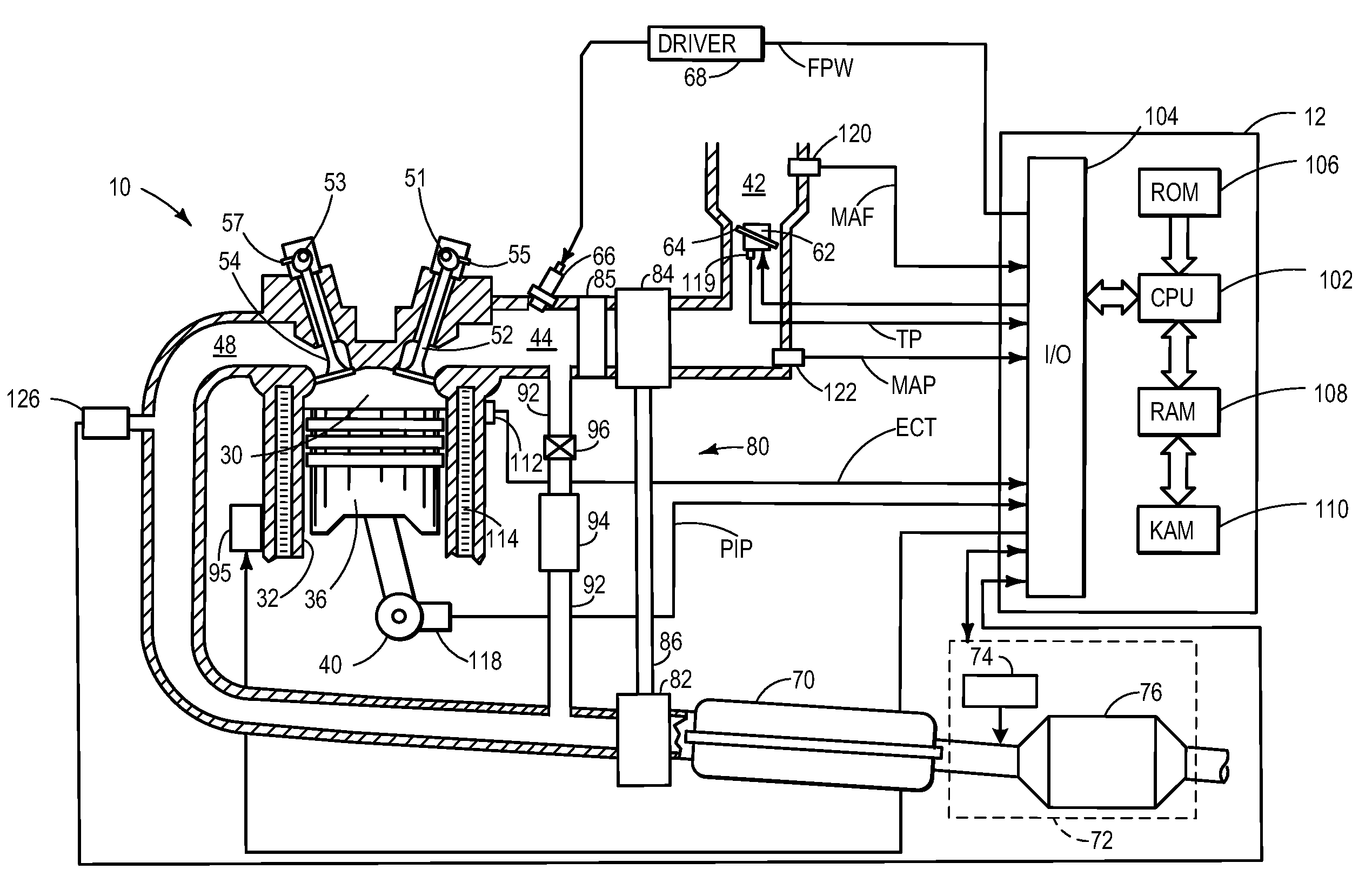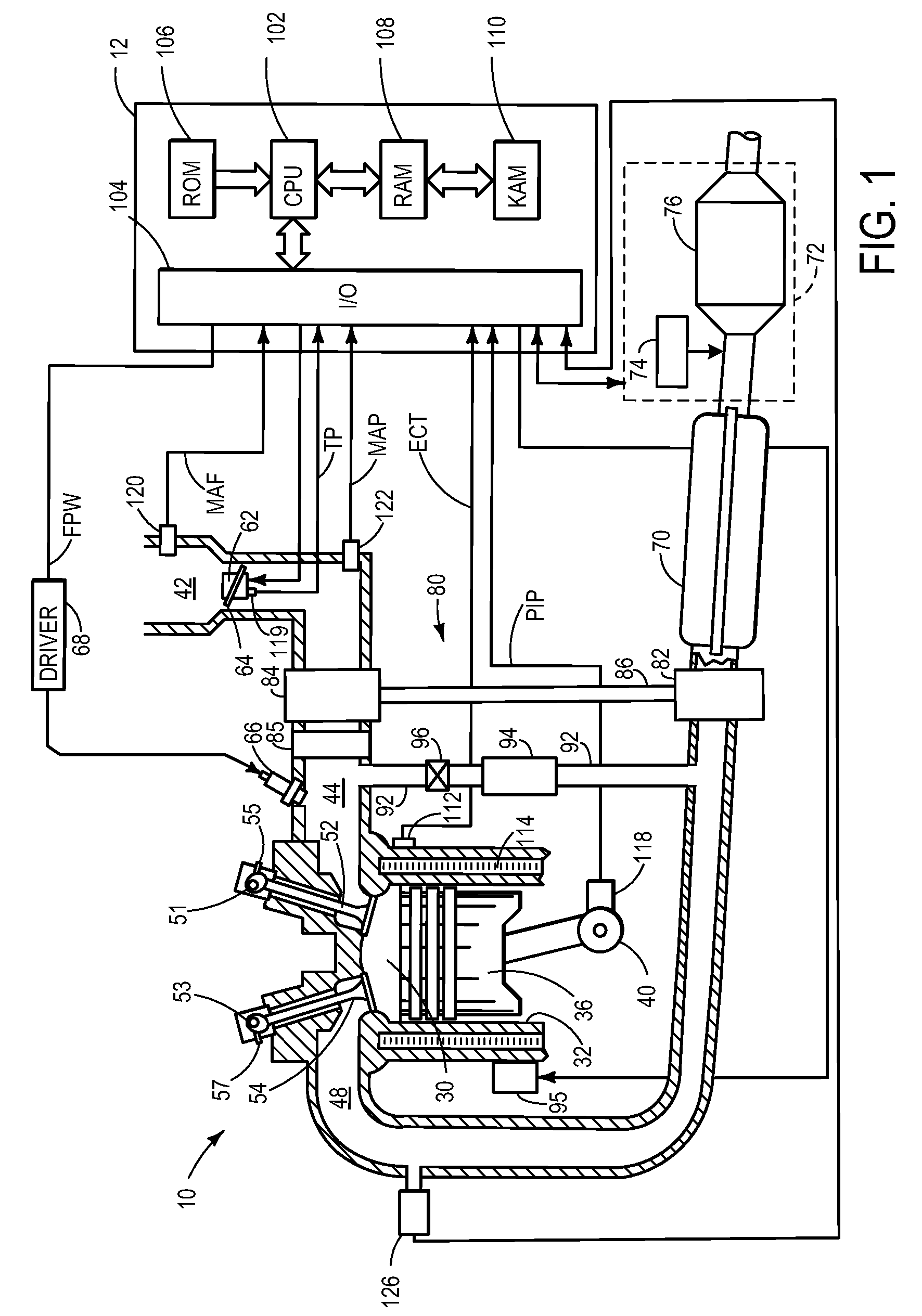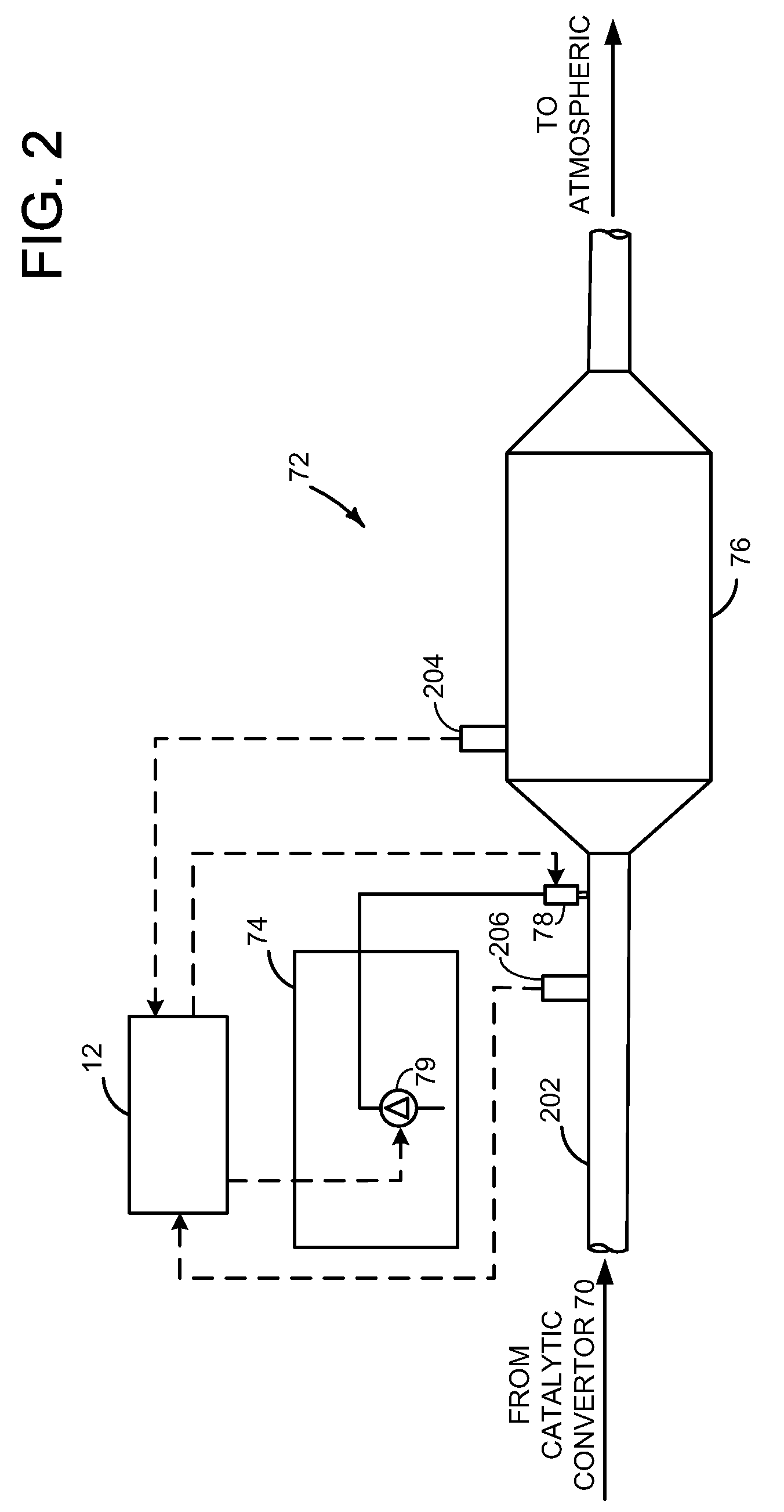Managing reductant slip in an internal combustion engine
a reductant and internal combustion engine technology, applied in the direction of machines/engines, electric control, instruments, etc., can solve the problems of reductant slip, reductant slip, reductant slip, etc., to reduce or inhibit increase the amount of reductant released, and reduce the effect of reducing or inhibiting the amount of reductant injected
- Summary
- Abstract
- Description
- Claims
- Application Information
AI Technical Summary
Benefits of technology
Problems solved by technology
Method used
Image
Examples
Embodiment Construction
[0017]Referring now to FIG. 1, internal combustion engine 10, comprising a plurality of combustion chambers and controlled by electronic engine controller 12, is shown. Combustion chamber 30 (e.g. cylinder) of engine 10 includes combustion chamber walls 32 with piston 36 positioned therein and connected to crankshaft 40. In one example, piston 36 includes a recess or bowl (not shown) to form selected levels of stratification or homogenization of charges of air and fuel. Alternatively, a flat piston may also be used.
[0018]Combustion chamber 30 is shown communicating with intake manifold 44 and exhaust manifold 48 via intake valve 52, and exhaust valve 54. Fuel injector 66 is shown coupled upstream of the intake valve providing what is known as port injection. The fuel injector delivers liquid fuel directly therein in proportion to the pulse width of signal fpw received from controller 12 via conventional electronic driver 68. Additionally or alternatively the fuel injector may be dir...
PUM
 Login to View More
Login to View More Abstract
Description
Claims
Application Information
 Login to View More
Login to View More - R&D
- Intellectual Property
- Life Sciences
- Materials
- Tech Scout
- Unparalleled Data Quality
- Higher Quality Content
- 60% Fewer Hallucinations
Browse by: Latest US Patents, China's latest patents, Technical Efficacy Thesaurus, Application Domain, Technology Topic, Popular Technical Reports.
© 2025 PatSnap. All rights reserved.Legal|Privacy policy|Modern Slavery Act Transparency Statement|Sitemap|About US| Contact US: help@patsnap.com



